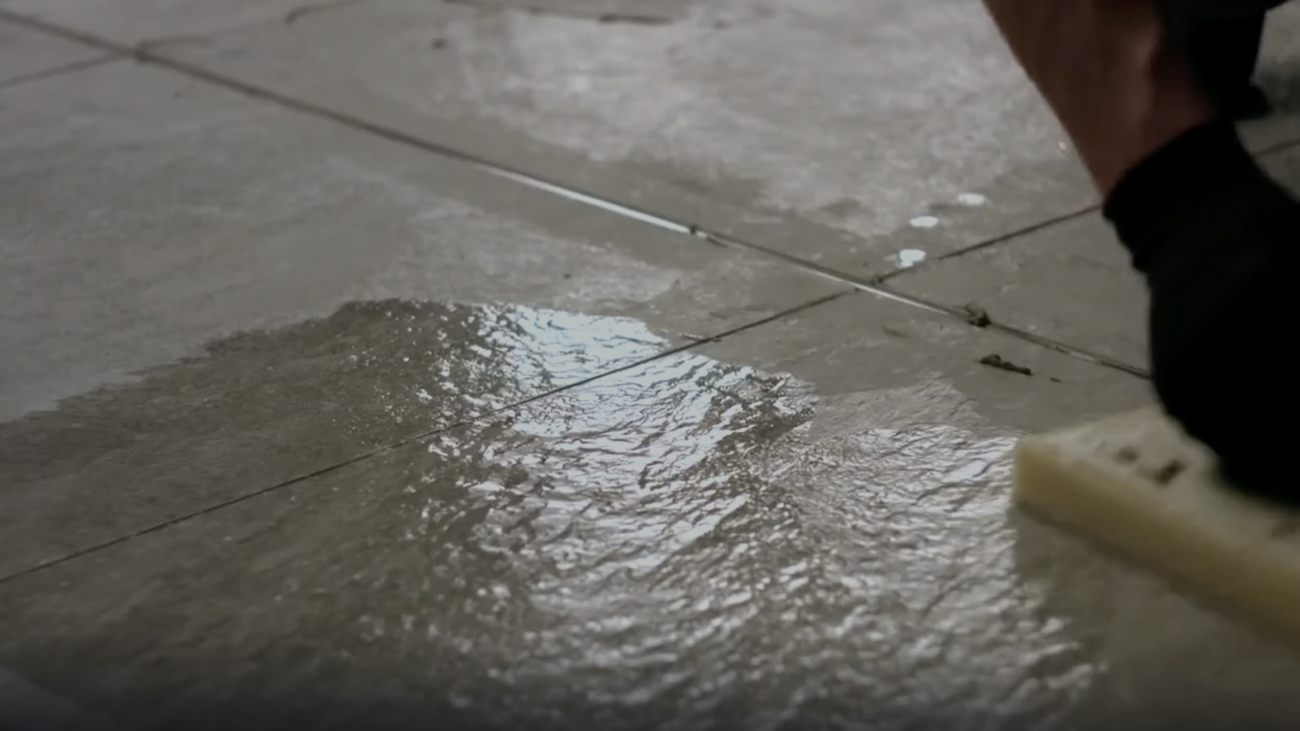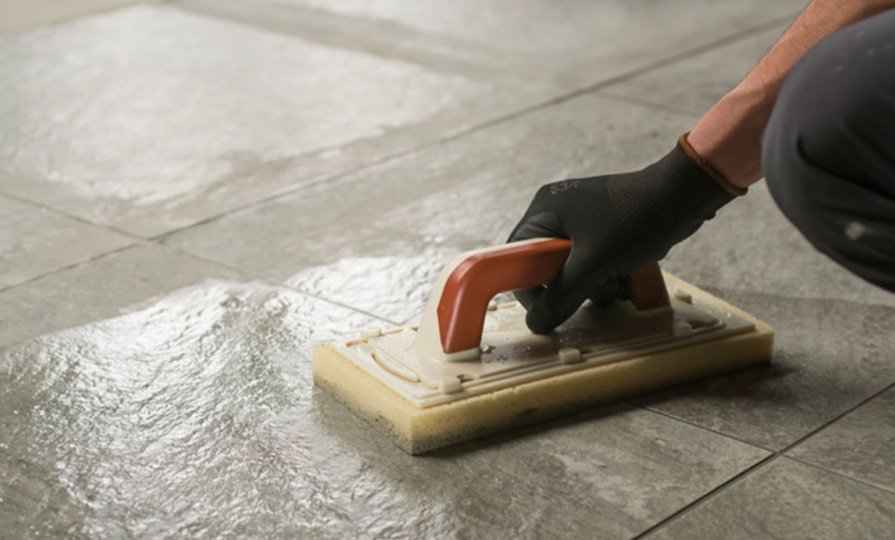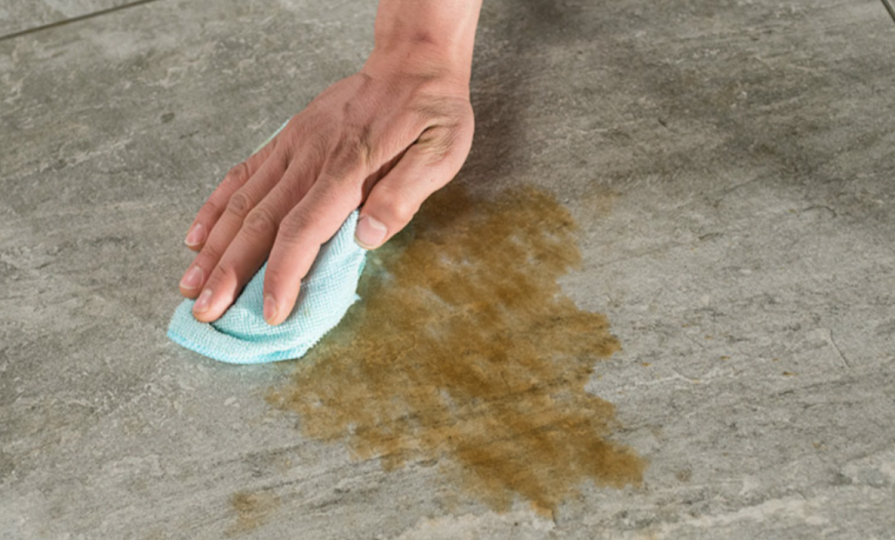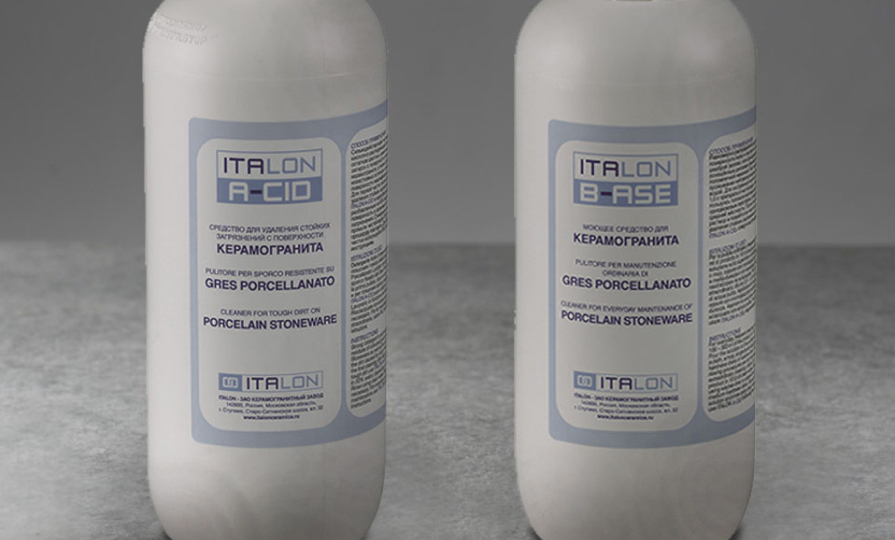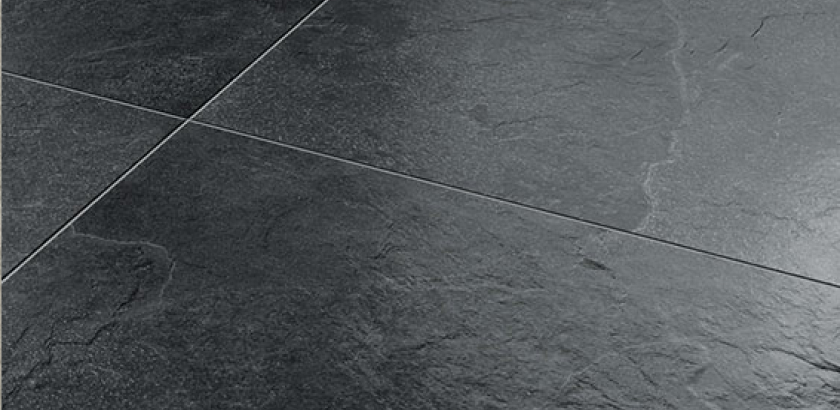Once the work has been completed, correct cleaning is compulsory. is indispensable to dissolve and remove residues of grout completely using buffered acids diluted in hot water (Italon recommends cleaning products as ITALON A-CID, 1 liter in 5 liter of water), which must then be removed completely and quickly, rinsing the floor with plenty of water to avoid residues or drops on the floor which could damage the tiles.
Leave the product to take effect on the wet floor, do not allow to dry, and rub with sponge, then rinse with plenty of water and check that the floor is free from detergent residues. If necessary, repeat the operation with a higher concentration (1:2, 1:3)
We recommend a preliminary wash on a sample surface area of a few square metres; if successful, proceed with cleaning the whole surface. After washing, an alkaline or basic wash must be carried out using degreasing detergents like ITALON B-ASE. This is because the acid wash may make the floor sticky, which could cause it to retain dirt.
